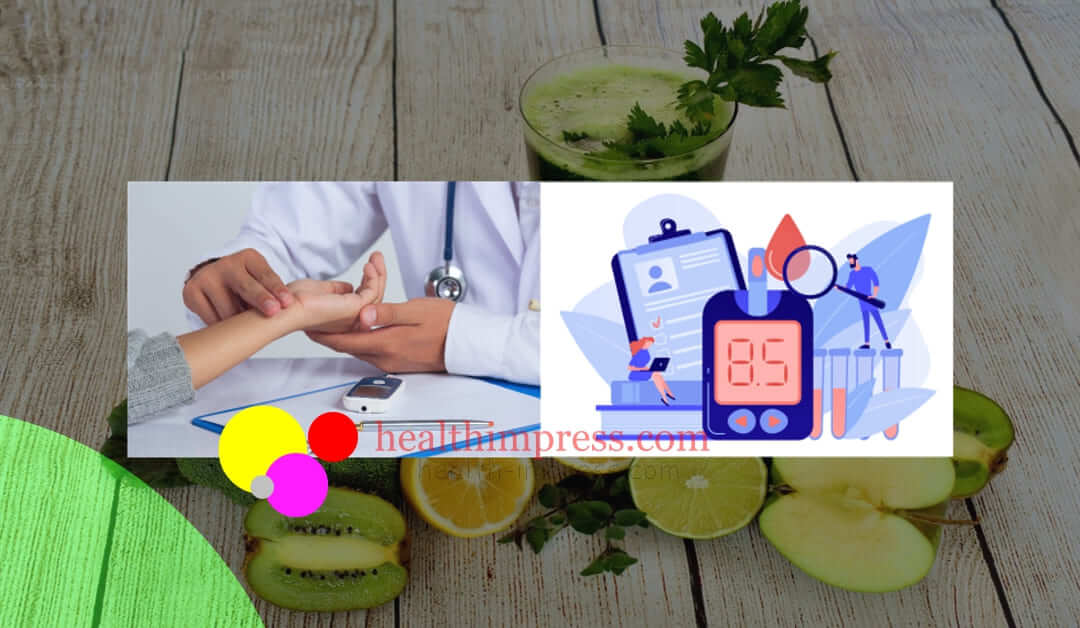General Health, Men's Health, Women's Health
Diagnosed With Type 2 Diabetes, What Next?
If you are diagnosed with type 2 diabetes, you may be shocked and unsettled at first. You should know, however, that type 2 diabetes, is easily treatable so that you can lead a largely symptom-free life with diabetes.
An important prerequisite is that you accept the disease and the treatment and become an expert on your disease. Because only when you are fully informed and enlightened can you decide for yourself which treatment measures you want to support independently, and motivated.
After you have been diagnosed with diabetes, an important contribution will be to change your lifestyle to the extent that you can really stick to it. Albeit to say it is not an easy task to do.
This can mean that you have to say goodbye to cherished habits that have crept into your everyday life over many years.
This primarily includes eating and drinking habits as well as the amount of exercise you undertake. Because through weight loss and increased physical activity, it is entirely possible, to at least, partially remove the insensitivity of the body cells (insulin resistance) to insulin.
If the full picture of diabetes, i.e. the typical, complete clinical picture, is reached, you can delay or mitigate the occurrence of secondary diseases by consistently adhering to therapy.
Changing these habits is a task that can only be mastered by your own conviction, patience, practice and in small steps.
Here are the eight steps to start a new life:

Step 1: Diagnosed With Type 2 Diabetes, take responsibility
In the first step, after you have been diagnosed with type 2 diabetes, you should realize that you are primarily responsible for how the disease develops.
It is not the doctor or your relatives who will ensure that your blood sugar levels improve or your weight is reduced, but only your personal decision to do something for or against it, as well as your actions derived from it.
Step 2: Trust yourself after you are diagnosed with type 2 Diabetes
Changing habits have a lot to do with confidence. What and how much do you really trust yourself to be able to change?
Here it is important that you set yourself realistic goals that you can actually achieve after you have been diagnosed with type 2 diabetes.
For example, if you want to lose weight permanently, your ideal weight, which is far away, should not be the goal, but rather sub-goals. It is important that you get used to your new eating and drinking behavior to the extent that you dare yourself to achieve them.
Step 3: Become aware after you are diagnosed with type 2 Diabetes
Starting a new life also means that you are aware of the habits that contribute significantly to your illness after you have been diagnosed with type 2 diabetes.
In this context, however, you should also ask yourself whether emotional stress or fears make you more susceptible to consuming more high-calorie foods or luxury foods (such as alcohol, sweets).
Perhaps now would be a good time to grapple with what is troubling your soul and look for solutions.
Step 4: After being diagnosed, score points through knowledge & patient training
If your goal is to support the recommended therapy and to support it effectively, you can acquire the necessary knowledge as part of a certified diabetes training course.
Here you will find all the important information on the subject of diabetes, including tips for everyday life so that you can control diabetes well and avoid secondary damage.
Talk to your doctor about where and when training is possible for you after you have been diagnosed with type 2 diabetes.
Step 5: Smoking and blood pressure effects after your diagnosis
Smoking and/or high blood pressure dramatically increases the risk of secondary diseases after you have been diagnosed with type 2 diabetes.
The toxins in the smoke have a direct effect on all blood vessels that are already affected by diabetes. The two are a dangerous mixture that can lead to circulatory disorders of the feet and hands, strokes and heart attacks.
- Refraining from smoking is rewarded in many ways:
- Your risk of stroke, heart attack, and cancer will decrease
- Your sense of taste is revitalized, food and drinks suddenly taste better again
- Your physical well-being and your performance are back.
- Your everyday life becomes livelier.
Similar to smoking, blood pressure that is too high damages the blood vessels: they constrict, stiffen and become brittle. Your health should be worth it to you that you have your blood pressure checked regularly and treated if necessary.

Step 6: Overcome yourself after you are diagnosed
Not just wanting, but doing is important. To overcome oneself, e.g., putting on jogging shoes after work in the evening and running a lap in the forest is often quite difficult at the beginning.
Here, it is important that you motivate yourself with conviction and will, until the evening jogging or walking tour has become a habit that you have come to love.
The same applies to the tendency of getting fat. Here too, it is important to keep practicing until a balanced diet has become a part and parcel of your life. Your body will thank you.
Step 7: Need for timely Check-ups after diagnosis
With the notion that when danger is recognized earlier, danger can be averted, you should be examined regularly by your family doctor and ophthalmologist. If there are no complications yet, an examination should take place every 3 months for your diabetics and at least once a year for kidney, liver, and heart functions.
However, if the first symptoms are already noticeable (e.g. deteriorating eyesight, tingling in the feet), you should talk to your doctor about how often you will need the respective examinations in the future.
Step 8: Maintain a healthy weight
Gaining weight after you have been diagnosed with diabetes is something that has to be checked. If not for anything else, you have to maintain a healthy weight and try to shed off some more weight.
After you have been diagnosed with type 2 diabetes, you can try this African Mango supplement which is one of the latest discoveries on the weight loss market. The product contains an extract from the African mango, which has some slimming properties more than the popular acai berry extract.
Step 9: Try alternative methods

Conclusion
It is imperative that you recognize your status as someone with diabetes. Note also that being diabetic is not a death sentence, however, you will need to make changes to how you live. In view of this, you have to take note and ask your doctor to:
- Examine your eyes regularly.
- Timely urine test to determine the protein excretion in your urine.
- Check your feet regularly to see for any swellings and other “abnormalities” such as numbness.
- Perform a timely physical exam, including measuring blood pressure and determining blood lipid levels.
Take care of your health!
Check our products page HERE
Important NOTE: This article is for general guidance only and is not intended to be used for self-diagnosis or self-treatment. You should not substitute a visit to the doctor.



